For English speakers not familiar with pinyin, "jua lee" will get you fairly close.
Medical circumcision is 割包皮 "ge bao pi". 割 "ge", as above, means "cut" and 包皮 "bao pi" means foreskin.
 People's Republic of China
People's Republic of China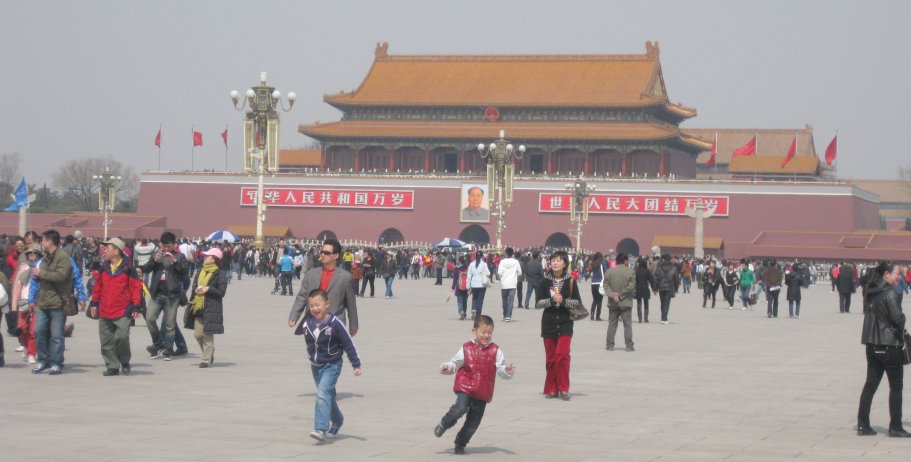
China has a very ancient history, and we cannot cover that here. This page deals with the (Communist) Peoples' Republic of China, established in 1949.
From the first European contact with China, Chinese boys were described as having very short foreskins. One early traveller described them as being 'circumcised at birth', which is clearly not true, as we can see from the statistics reported below. That doesn't mean that their foreskins aren't short, of course. It certainly seems that, like other Asian peoples, many Chinese men like to have an uncovered glans (see our Japan page). Looking at journal papers about circumcision in China, the two common reasons for circumcision are 'phimosis' (which is self-explanatory) and 'excess foreskin' (which presumably means a covered glans).
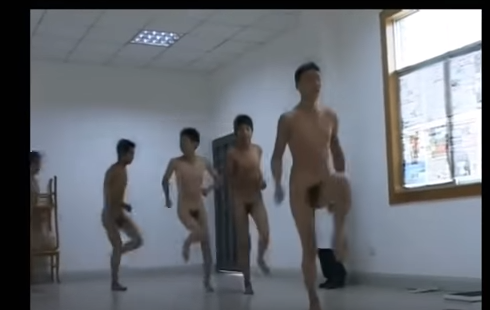 | 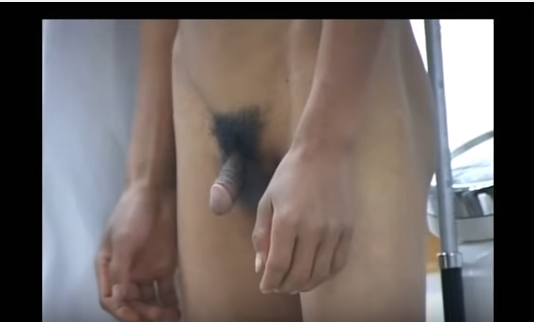 |
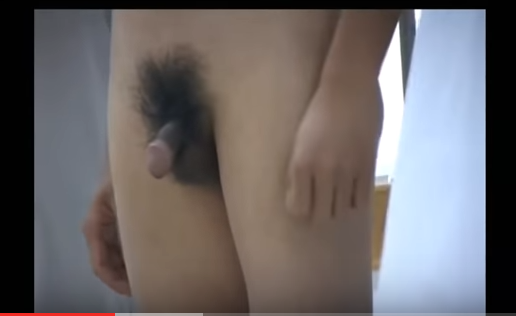 |  |
These images come from a movie of new recruits to the Chinese People's Army. (The movie was formerly on YouTube but has now been removed.) According to a study allegedly made by the army at the conscription of young Chinese men, fewer than half of them has a fully covered glans. Thanks to regular contributor Andras for this information.
The audio commentary that accompanied this video suggested that circumcision was almost unknown in China, but not so, as we shall see. In fact, the young man in the lower left image appears to be circumcised. But it is clear that an uncircumcised bare glans is a popular option.
Circumcision in China has been increasing in recent years, in part because the newly well-off middle class perceive it as a good thing for their children, but also because young men with a covered glans demand, and can afford, it. (Understand that in this supposedly Communist country there is no free health care). Another factor is government support for circumciaion and the AIDS crisis has precipitated this.
China Considers a Pro-Circumcision Policy BEIJING, (Reuters, 29.Nov.2007) :
The rate of new HIV/AIDS infections in China is slowing and is now mainly being transmitted through sex, which the government could tackle with a circumcision campaign, the health minister said on Thursday.
The country will have an estimated 50,000 new infections in 2007, compared with 70,000 in 2005, though groups like men who have sex with men are increasingly at risk, according to a report by the State Council, or Cabinet, and the United Nations.That will mean there will be about 700,000 people living with HIV/AIDS this year in China, up from an earlier estimate of 650,000. Of the new infections, 44.7% will come from heterosexual transmission, 12.2% from men having sex with men, and 42% from intravenous drug use, the report said. In the past, most infections were caused by intravenous drug use. “At present, the AIDS epidemic in China continues to spread, but at a slower rate”, Health Minister Chen Zhu told a news conference. “Sexual transmission is now the main route for the spread of AIDS.”
Chen said more focus needed to be put on traditionally marginalized groups, like the gay community and drug users, though he added condom use by sex workers had risen from 14.7% in 2001 to 41.4% last year. Yet the report found risky behavior by men who have sex with men remained widespread, with just a third using condoms for anal sex. Chen said that with infections now primarily coming via sexual transmission, a male circumcision campaign could not be ruled out in China.
Studies have shown that circumcision could reduce the risk of HIV infection by up to 60 percent, though it does not offer total protection from the virus. The World Health Organisation has already recommended it as one of the ways developing countries, especially in Africa, could use to fight the spread of AIDS. “This is a technical question. I think our experts will evaluate it,” Chen later told Reuters. “Even before the AIDS era some children in China were already being circumcised.”
Circumcision rates are low in nainland China compared to Asian countries like South Korea or the Philippines, where the foreskin is often removed before puberty as a tradition, or Muslim countries like Indonesia which practice it for religious reasons. China’s Muslim minority, concentrated in the far western region of Xinjiang, likewise circumcise their male children, normally as they reach puberty. Chen said that were the government to decide to promote circumcision among the wider population, he did not think it would run into much opposition or cultural problems. “As long as there is evidence it is effective, I don’t think it would be an issue,” he said.
Chinese boys and their foreskins
A study of 10,421 boys aged 0 to 18 years, conducted in the central Chinese province of Chongqing between February and November 2008.
| Age | Non retractable |
Partially retractable |
Fully retractable |
Circumcised | Location Map for Chongqing Map © 2006, US Department of Agriculture |
|---|---|---|---|---|---|
Under 1 month |
<99.7% |
0.3% |
0 % |
0 % |
 |
1 to 12 months |
84.43% |
14.9% |
0.67 % |
0 % |
|
1 to 2 years |
48.13% |
49.79% |
2.07% |
0 % |
|
3 to 6 years |
27.12% |
52.11% |
10.72% |
10.05% |
|
7 to 10 years |
12.04% |
48.98% |
23.7% |
15.29% |
|
11 to 18 years |
6.81% |
33.65% |
42.26% |
17.28% |
So much for 'born circumcised'! Not tabulated, but mentioned in the text, was that many boys had foreskin dilations, usually before school age. 30% of the boys with retractable foreskins were described as having 'redundant foreskin'. It seems that circumcision is almost never done before age 3 in China, but after that age is much more common than most people had previously thought. Furthermore, since many of the uncircumcised boys in the older group still could not fully retract their foreskins many would probably be circumcised subsequently.
Reference: Yang C, Liu X, and Wei GH., Foreskin development in 10421 Chinese boys aged 0-18 years. World J Pediatr. 2009 Nov;5(4):312-5.
There is still a push to promote infant circumcision in China for health reasons, especially HIV protection. A 2012 paper surveyed parents of newborn boys about the acceptability of early infant circumcision. They found a distinct lack of enthusiasm and concluded that more education would be needed to get such a program off the ground.
Lianjun Pan, Aixia Zhang, Rong Shen and Zhong Wang, 2012, Acceptability of early infant male circumcision among chinese parents: strategy implications of HIV prevention for china. BMC Public Health 12:738
It is open access, you can read it here. (The unconventional capitalization is as given on the paper.)
A series of papers on foreskin histology from Chinese hospitals and medical colleges, published between 2005 and 2012, show that there was no shortage of source material. Most of these were from adult circumcisions and the reasons given for circumcision divide pretty equally between phimosis and redundant foreskin.
More information required:
We would love to hear from readers with information about the current circumcision situation in China. Send mail to the Editor 寄发邮件到编辑
Reports from our contributors about mainland China:
From H Y-L, a 15-year-old Chinese schoolboy, in August 2021.
I live in Hebei Province (which is beside Beijing), Tangshan City, my hometown is famous for an earthquake in 1970s. I was circumcised when I graduated from my primary school. In my junior high school, almost 15% of boys were circumcised in my opinion.
In September, I will go to the senior high school. Lots of my friends went
to hospital and got circumcised. Our new school asked all the students go to the hospital and have a body-check. Our boys should check our penis, too. If we have a phimosis, we should be circ'd.
Boys talk about their penis and foreskin at school. Sometimes, we will see our friends' penis if they are displayed when we pee in the toilet in our dormitory. Actually, our Chinese students do not avoid talking topics on sex with others. Girls do talk about that with us
because we both want to know about each other's bodies. Now Chinese people and China is not what you think. We have a open and tolerant society.
In China , we don't call circumcision 割礼 "ge li", that refers to religious and ritual circumcision. For medical circumcision we say 割包皮 "ge bao pi". We call the foreskin 包皮 "bao pi", and 割 "ge" means "cut ... down"
-----------
I travel to China frequently for work and know a number of men in the major cities in mainland China. In the major metropolitan areas circumcision is becoming more common. It is thought of as modern and like many things in China (Walmart, McDonalds, etc.) it is becoming more and more popular to be circumcised. A few guys in their early 20s told me that several of them had been done when they were around 10-12 by parents because of this modern, wealthy, healthy, view they seem to equate with circumcision. Several other guys indicated that they had been done at their request when they were 17-24, and you could easily get it done by a doctor upon request, with or without medical necessity, so long as you could pay the nominal fee. They felt the poor and rural males were not circumcised ever, regardless of need.
-------I’ve been dating a guy who was born in mainland China. He is loosely circumcised. He tells me that while the Chinese do not routinely circumcise infants, it is not at all uncommon to be circumcised during your teen and early 20s in China and that male circumcision is the single most commonly performed medical procedure in China. He reports that approximately 25% of all Chinese males are circumcised, usually because of problems with their foreskins, which they discover as they become more sexually active. He also tells me that he believes this has to do with the fact that most families are extremely hesistant to discuss hygiene of the genitals because of cultural reasons. Consequently, he never was told (nor did any member of his family) to peel back the foreskin and wash the bared glans. He believes this leads to a higher incidence of problems with the foreskin, and hence the higher need for circumcision. He was circumcised under local anaesthetic, freehand. They left plenty of inner foreskin, along with the frenulum. It is a loose circumcision by American standards, although the glans is never covered with skin even when completely soft. However, a large cuff of foreskin remains bunched up behind the glans when soft and their is ample loose skin during erection.
-------
I am Asian and circumcised, with exception that I was born in the States. Circumcision is generally less practiced in China, although it recently became very popular. To my surprise, my cousin who just recently immigrated to America has a circed penis. I was amazed at all the advertisements for circumcision from my recent trip to Guangzhou. I don’t know when this trend started but it seem to be very welcomed
and accepted by the people.
Aric October 2009.

Hong Kong island became a British possession in 1842. The colony annexed the Kowloon Peninsula in 1860 and in 1898 acquired from China a 99-year lease of the New Territories. Upon the expiry of that lease the situation, naturally, became rather complex and in 1997 the entire territory reverted to China, but with a high degree of autonomy (which is steadily being eroded).
A personal accountThe Editor made the first of many visits to Hong Kong just after the handover was took place, and wrote this day by day journal for the old Cirlist mailing list.
My first day in Hong Kong! I'm here for a week, for work reasons, and my accommodation had been arranged in the YMCA - actually the Salisbury, a top class hotel run by the YMCA in just about the best spot around, the tip of the Kowloon peninsula. It's reasonably economical, it's next door to the Peninsula Hotel (the absolutely legendary top Hotel in HK) and shares the same magnificent view. While it has all the facilities of a modern hotel, it also has all the traditional ones of a YMCA, including a pool and fitness complex which is really first rate. Treadmills and weights aren't my scene, but swimming laps seems like a pleasant way to keep fit in the Hong Kong climate.
So before lunch today I dropped into the pool area. In the changing room I soon saw that men don't worry about wandering around naked, and as I was changing into my swimmers a father and and his young son took up their place at the next bench. Both were uncircumcised, and this led me to start thinking about the rather conflicting information I'd heard about the prevalence on circumcision in the territory. So far, at least, no evidence for circumcision. Nor did it support the claim that Asian men have very short foreskins: both were just like mine had been at the equivalent ages.
On my way back after 20 laps (I must confess it's only a 25 metre pool) the change room was a bit busier. The showers were just shower jets in a single room, and a father and son were under the shower opposite. Dad kept his swimmers on but son (5 or 6 I'd guess) didn't, and he was circumcised. A very loose circumcision, partly covering his glans, but then his penis was so tiny that may have been inevitable. Almost immediately another father and son team took the shower next to mine - dad was circumcised (high but not completely tight) while son (9 or so) was uncircumcised, with a fairly long foreskin. So I started keeping an unofficial tally, and as I was getting dressed in the locker room a boy of about 11 on the next bench was obviously circumcised. This had the figures at exactly 50/50, among both men and boys.
Monday morning, a late start to the day's work and I had nothing to do till 10 so it was time for another 20 laps. No kids at that time, of course - mostly middle-aged men like me. A younger man changing as I arrived, uncircumcised with lots of foreskin (but not quite a hosepipe). While I was changing, another man took the next bench and he was clearly and thoroughly circumcised. As I walked through the shower room to the pool an elderly and slightly overweight chap was showering - he seemed to have a lot of skin around and my best bet on a passing glance was uncircumcised but retracted. After my laps, a middle aged man was in the shower - taking ages and singing amazingly tunelessly - and definitely circumcised. I should mention that so far I've been the only Caucasian in the locker room. So on day 2 it's still 50/50.
Tuesday, a late swim just before the pool closed at 10.30 pm. One young man (20) just coming out of the shower as I arrived - very good looking, with a slender penis and lots of foreskin bunching up in front of it. Most of the men here are overweight and not much to look at (I include myself in this!) so he stood out. After my swim a couple of men were in the shower room at the same time - and when I say a couple that's what they appeared to be. The older was uncut, with a short foreskin, while the younger was circumcised. A tall young man came in just as I was leaving. I only caught a glimpse, but he had skin just over the edge of his knob - I'd reckon a loose circ rather than retracted. So we are still honours even!
On Wednesday I decided not to join my colleagues for dinner - I'm eating far too much here - and went for an earlier swim at 7.30. Three other circumcised men in the shower with me so the helmets were winning. Then another man, who'd been keeping his trunks on, took them off. He was uncircumcised and it was noticeable that even with his trunks off he tried to keep it out of sight. Roundheads have shown no such shyness. An elderly Caucasian wandered in - seemed to be having a shower without ever going in the pool - uncircumcised with quite an excess of skin. A sad sight but I'm not scoring westerners anyway. As I left the changing room a young man in his 20s was standing naked thinking about putting his swimmers on. A fully bare knob with wrinkled skin on the shaft - I suppose it could have been retracted but it looked circumcised to me. Four roundheads to one cavalier tonight.
It's now Thursday night. Tonight it was a really early swim - as soon as I got back from the University, and I was in the pool by 6.15. On my way in a man and his young son were in the shower - both uncircumcised and showing no sign of shyness. Long foreskins both. A young man passed through - I thought he was cut but didn't really see, so no score recorded. When I came back in from my 20 laps two men were in the shower, one naked and circumcised, the other with his trunks on. He was a strange character - he'd been sitting at the end of the fast lane through at least 10 of my 20 laps staring at ...? Asian but with a cropped black beard, he didn't look typical Hong Kong Chinese. Eventually he pulled his pants down, and revealed a foreskin (not too long). He too acted shy and when he walked into the locker room he had his trunks half pulled down so that his bum was uncovered but the end of his cock was not. Definitely a foreskin complex there. It was obviously skins night tonight - 3 to one.
Friday - a quick 20 laps before Peking Duck at a farewell dinner. Early again, and a crowded pool. A young boy - 7 or so, and uncircumcised, was wandering around as I entered - his father already had pants on and was doubtless trying to get the boy to get dressed. (Been there ..!) A young man, clearly circumcised, was changing as I walked through. Only one man in the shower when I showered after my swim, circumcised again. Two to one for the roundheads tonight.
To sum up my week (only a tiny part of which was spent in the pool, though it's helped me to keep fit faced with HK eating habits) it is clear that circumcision in alive and well in the SAR. Both men and boys are likely to be circumcised so it doesn't seem to be the custom of a past generation as it is in England, and to some extent in Australia. The rate overall seems to be at least 50% circumcised. Will Chinese ownership make a difference? I don't think so. There seems to be a determined attempt to keep everyday life just the same.
Ten years laterIn 2009 a group of doctors decided to investigate the populatity of circumcision, and people's attitudes to it. They sampled parents of children aged 6-12 at 4 primary schools, two in Kowloon/Kong Kong and two in the New Territories. 1,479 parents responded (a respectable 95% response rate). The sample was exclusively Chinese. They found that 10.7 of the boys, and 11.8% of their fathers, were circumcised. 15.6% of parents of uncircumcised boys thought that their sons needed circumcision, so the proportion seems likely to increase. Demand for circumcision was higher among parents born in mainland China and those of low family income. The authors of the paper had a rather anti-circumcision slant, but the evidence of the numbers suggests that circumcision rates will increase.
Reference: Michael WY Leung, Paula MY Tang, Nicholas SY Chao & Kelvin KW Liu, 2012. Hong Kong Chinese parents' attitudes towards circumcision. Hong Kong Med J 18:496-501
Any information about Hong Kong? Send mail to the Editor 寄发郵件到編輯
 Taiwan, Republic of China
Taiwan, Republic of China
Taiwan, called "Ilha Formosa" (beautiful island) or just "Formosa" by the Portuguese, is a land off the coast of China. The name Formosa was still in common use well into the 20th century. Its history is complex, to say the least. The indigenous inhabitants, now mostly Christian, are closely related to the Filipinos. (The northernmost islands of the Phillipines are visible from the southern tip of Taiwan). Like the Filipinos, they traditionally practised circumcision, and probably still do. They are now hugely outnumbered by subsequent Chinese immigrants and mostly live in their own communities in the mountains.
In the 17th century the Dutch and Portuguese opened up trading outposts on Formosa, and large numbers of Chinese immigrants, mostly from Fujian province, flooded in. This led to the annexation of the island by China in the Qing dynasty. However in 1895 the Chinese ceded the island to Japan. When Japan was defeated at the end on World War 2 the island was claimed by the Republic of China, established in 1912 after the fall of the Qing dynasty and the end of Imperial Chinese rule. However, the communists were advancing and in 1949 the rump of the Kuomintang (Republican) governemnt fled to Taiwan. This led to Taiwan, as the last remaining part of the Republic of China, claiming sovereignity over the whole of China, while the (Communist) Peoples Republic of China claimed sovereignity over Taiwan.
In the many years since then, an uneasy truce prevails, and there is trade, and tourist traffic, between the two 'non-countries'. The two main political parties in Taiwan divide between pro-unification and pro-independence.
Post WW2 US influence was strong in Taiwan. That meant that circumcision used to be routine. Until 1995 they had a private, insurance-based healthcare system like the USA. At that time they circumcised almost all newborn boys. Now they have a socialized medical system similar to the UK’s National Health Service. Like the UK, they too stopped routine circumcision of boys once the state was paying the medical bills. The Editor has spent a lot of time in Taiwan and it is certainly true that at the swimming pool one often sees circumcised fathers with uncircumcised sons. But let's look at the medical reports.
The state of the foreskin was investigated in Taipei city (the capital) by a team from hospitals and universities. Boys were checked at ages 0, 7, 10 & 13. Note that this would have involved few, if any indigenous Taiwanese. The results are shown below. Table 1 shows that Taiwanese boys do inded have short foreskins. Even by age 7 some of them have the glans only partly covered, and by age 13 almost half have a partly uncovered knob, and a few have it totally bare.
Table 2 shows foreskin retractability and circumcision. Type 1 means than no more than the urinary meatus (pee hole) can be exposed, type 2 means that half the glans can be uncovered, and type 3 is completely retractable. We see that by age 7 over 70% were completely retractable and most of the rest were partly rretractable. By age 13 this had risen to 84% fully retractable and only 1 poor boy with a total phimosis. Around 7% of the 7 and 10 year olds were circumcised and this had risen to nearly 9% by age 13. At least one more boy was obviously going to join their number before long.
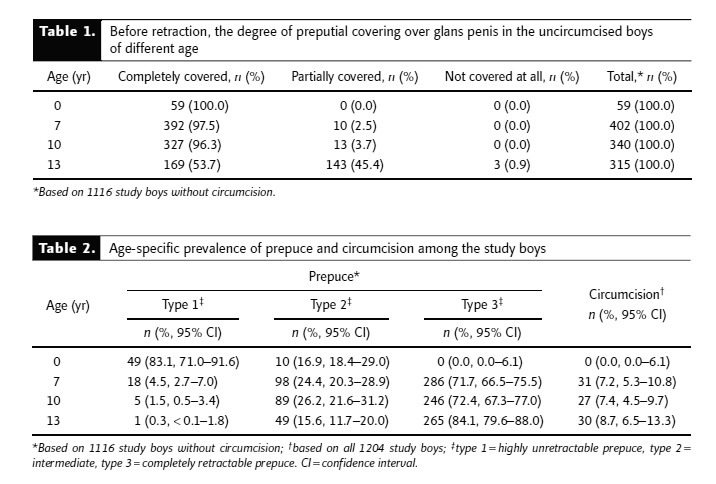
Reference: Ming-Chung Ko, Chih-Kuang Liu, Wen-Kai Lee, Huey-Sheng Jeng, Han-Sun Chiang, Chung-Yi Li, 2007. Age-specific Prevalence Rates of Phimosis and Circumcision in Taiwanese Boys. J Formos Med Assoc 106(4):302–307
Any further information about Taiwan? Send mail to the Editor 寄发郵件到編輯
Acknowledgements
The following resources were used in the preparation of this web page:
Reuters News Agency report, 29th November 2007.
Personal testimony of members of the CIRCLIST discussion group.
References as cited in the text
